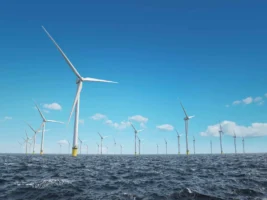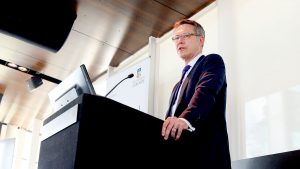French oil giant Total and Canadian listed power developer Etrion are planning to build a 70MW solar PV farm in Chile that they say will be the largest in the world that will be financed only by revenues from the spot price of electricity.
Project Salvador, as it is being dubbed, will cost around $US200 million to be built, including around $US140 million of non-recourse project debt from the Overseas Private Investment Corporation (“OPIC”), the US Government’s development finance institution.
The equity will be shared by Etrion (70 per cent), Total and Chilean firm Solventus. The project will use technology manufactured by US-based SunPower, whose biggest shareholder is Total.
The project will seek to take advantage of Chile’s high electricity prices, boosted by a demand shortage, to develop its returns. But according to Total, the project is an important step in the process of transforming the capabilities of solar power in the world.
“This merchant project confirms that solar energy is becoming competitive with other conventional energy sources,” said Philippe Boisseau, the head of marketing and services and “new energies” at Total.
“Solar power is a compelling proposition in Chile due to the amount of solar irradiation received every day in the region. Combined with Chile’s high electricity prices, large energy demand and low construction costs, solar can compete with traditional sources of electricity in Chile without government subsidies.”
Etrion CEO Marco A. Northland, said the project will demonstrate that solar is a viable and sustainable power solution in Chile given the strong solar irradiation and high electricity prices in the region.
It is estimated that Chile has more than 3,000MW of solar projects in the pipeline, and is seen as the biggest opportunity for large scale projects to be constructed without subsidies.
Interestingly, Australia could be the next market to see solar farms built on a “merchant” basis, meaning they rely on the spot market for revenues rather than power purchase agreements from utilities or big energy users.
The proposed 56MW Moree solar farm – to be developed by FRV and Pacific Hydro – is looking to do just that. Moree Solar will be at least partially financed with debt from the Clean Energy Finance Corporation, which performs a similar function to OPIC, even though the new conservative Australian government wants to close the institution as part of its demolition derby of climate change and renewable energy policies.
RenewEconomy understands that other solar farm developers in Australia are considering similar models. The spot market is being pursued because developers find it virtually impossible to gain power purchase agreements from electricity utilities because of uncertainty about the future of the country’s renewable energy target.
Infigen Energy, for instance, has just switched on a 200kW solar system near its Capital wind farm near Canberra that it will use to test the spot market. (It should be pointed out that the financing does depend on the availability of renewable energy certificates, as Australian wholesale prices are low).
OPIC’s debt is being made with a 19.5 year tenor, a duration that would be virtually impossible to obtain from a commercial bank.
Both projects – the one in Chile and Australia – are likely to obtain power purchase agreements at some stage in the future.
Project Salvador is expected to begin construction in the next few months, with production due to start in 2015. The project will use SunPower Oasis Power Blocks system, which builds solar farms in 1.5MW modules using high efficiency solar panels and single-axis trackers.
Once operational, Project Salvador is expected to produce approximately 200 gigawatt-hours of solar electricity per year, suggesting a capacity factor of more than 30 per cent – and delivering regularly during daytime. It will provide enough to supply electricity to approximately 60,000 people in Chile.
(Update: This story was updated to correct shareholdings of the project).










